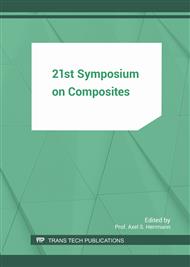p.506
p.512
p.520
p.527
p.535
p.544
p.555
p.562
p.568
Nozzle and Hot Runner Systems for Injection Moulding Machines for the Manufacturing of Moulded Thermoplastic Composite Parts with Skin-Core Structure (Sandwich Mouldings)
Abstract:
Injection moulding of thermoplastic melts is based on the source flow. This principle allows for the production of mouldings in skin-core structure: the core enclosed on all sides by skin material may consist of a different or modified thermoplastic material. Generally, this method is referred to as co-injection or also sandwich injection moulding.Known applications of this method include processing of recycled material in the core and new material for the surfaces, foaming (chemically and physically) of the core material, processing of filled core material, e.g. Glass fibres and unfilled material for the surfaces. Other combined methods, e.g. with gas and water injection, are possible.The report describes the nozzles and hot runners developed by A&E Produktionstechnik Co. for the application of this method. Sample mouldings, produced and developed by customers and research cooperation partners, demonstrate the potentials and limits of the procedure in regard to the combination of different thermoplastic melts in a moulded part.
Info:
Periodical:
Pages:
535-543
Citation:
Online since:
July 2017
Authors:
Keywords:
Price:
Сopyright:
© 2017 Trans Tech Publications Ltd. All Rights Reserved
Share:
Citation:


